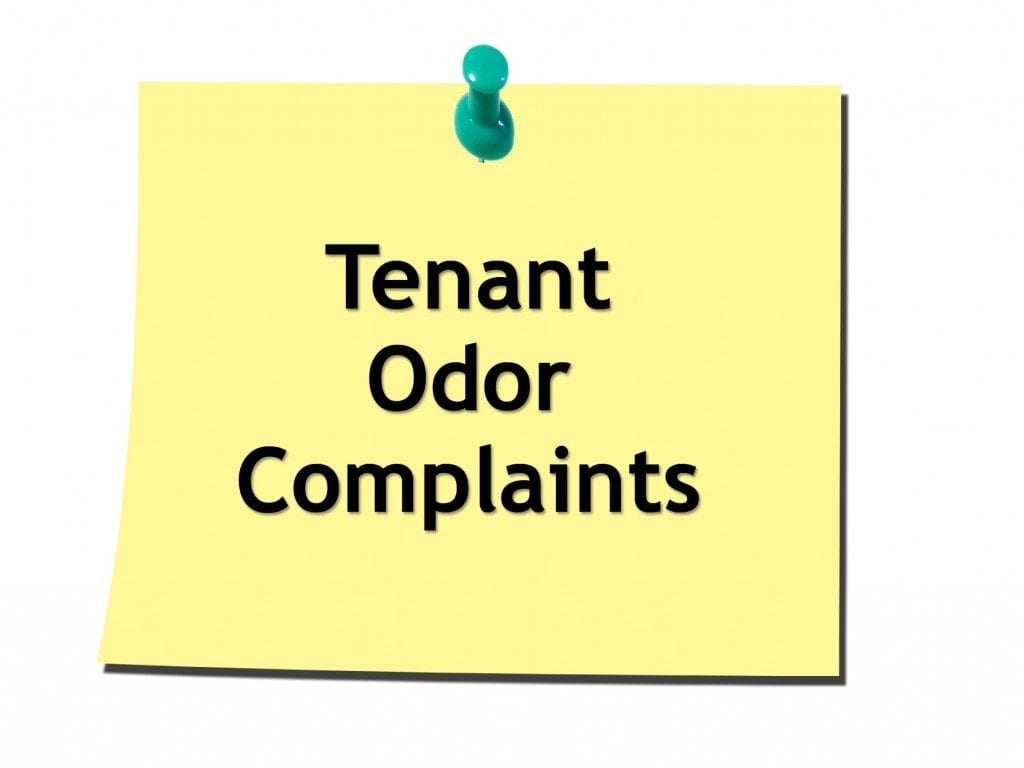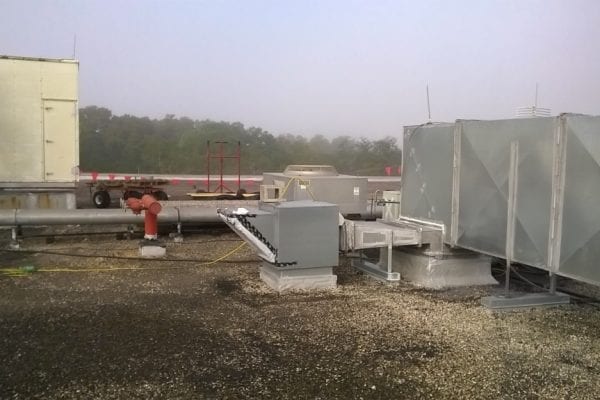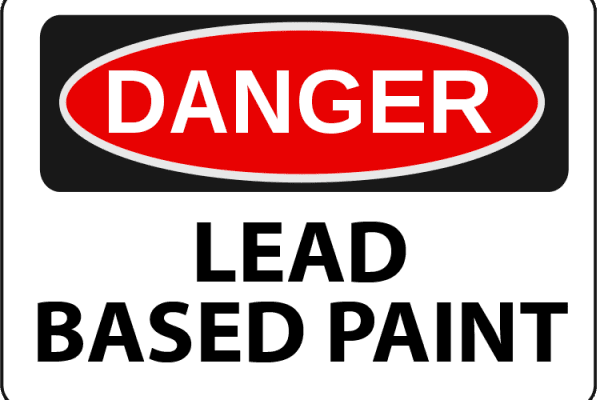Everyone hates bad odors, especially when they linger at the workplace. Beyond being a superficial annoyance, odor problems can also be telltale signs of more insidious building issues. Whatever the source is, you want to respond to tenant odor complaints as soon as you can, for the sake of the health and well-being of both your tenants and the building.
Identifying the Cause
The first step to solving odor issues is to identify the cause. Disagreeable odors may be from a temporary, one-off event or they may be part of a chronic problem. Certain odors can be indicative of a larger problem, such as a chemical spill. Don’t try to cover over odors, because you will usually end up with a mixture of disinfectant and the unwanted odor, as well as fail to solve the root problem and potentially overlook a critical building issue, such as a chemical leak or mold growth. With a little investigating, you can fix the problem at its source.
In the easiest case, there is a recognizable odor from something that doesn’t belong in the building, such as an animal carcass, a mold outbreak, spoiled food or other organic matter, improperly disposed waste, smoke, chemicals, etc. In a case like this, the odor will usually go away once the source of the problem is identified, removed, and properly cleaned. If the odor appears to be coming from inside but isn’t traced to a particular contaminant, it may be an indication of a deeper building issue that requires further investigation.
Problems can also come from otherwise pleasant scents that have become overwhelming due to improper ventilation. New carpet, furniture, air fresheners, and cologne-wearing employees can all create oppressive odors within a space with inefficient ventilation. These issues can usually be solved by increasing the fresh air intake.
Sometimes, indoor air quality problems are caused by inferior outdoor air quality, sometimes thanks to a poorly placed air handler. One of the first places you should look when searching for the cause of an unwanted odor is your fresh air intake. One of the most common situations we encounter is an air intake located inside or adjacent to a janitorial supply closet, with the odors of cleaning chemicals, old mops, and stagnant water getting pulled into the intake and distributed throughout the building. Your air intake might also bring in unwanted odors from outside, such as vehicle exhaust, smoke from a fire, particles from nearby construction activities, cigarette smoke, and more.
Investigating the Source
If there is no obvious cause of the issue, it may take some work to investigate and trace it to its source. Your investigation should take into account factors such as occupant complaints and symptoms, location(s) in the building, time of day, seasonal differences, and relationship to activities inside or outside the building.
Begin by interviewing tenants, asking them:
- How would they describe the odor?
- Where does it seem strongest?
- When does it seem strongest—time of day, weather factors, time of year?
- Have there been recent changes in the environment, such as new furniture or carpet, new equipment, new adjacent tenants, new processes added to production?
- What are the standard maintenance routines for the building? How often is the office vacuumed? How often are carpet and drapes shampooed? How often are floors waxed? Are there any visible signs of dust? Have pesticides been applied recently? Is there any evidence of moisture intrusion into the building?
The information you gather will guide your investigation, and should lead you to the source.
Prevention
In order to prevent odor issues in the future, stop IAQ issues at the source. Ensure the HVAC system is well-maintained, the air intake is in a good location, leaks, moisture, and other building problems are promptly addressed, renovations are appropriately planned for, and utilize appropriate and safe pest-control practices.
On the tenant side, ask your occupants and their employees to:
- Place office furniture and equipment in locations, based on the adequate air circulation, temperature control, and pollutant removal functions of the HVAC system.
- Do not block air vents or grilles.
- Maintain office plants properly.
- Dispose of garbage promptly and properly.
- Store food properly.
- Avoid bringing in products that can release harmful contaminants or bothersome odors.
- Notify the building manager when they suspect a problem.
Odor problems can be related to deeper building issues such as mold, structural weakness, plumbing, and more. Getting help from a provider with cross-disciplinary expertise can help you solve the problem no matter where it leads. Feel free to contact one of our indoor air quality experts right now for a free consultation.






